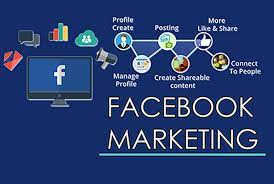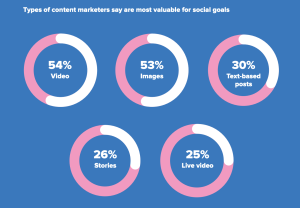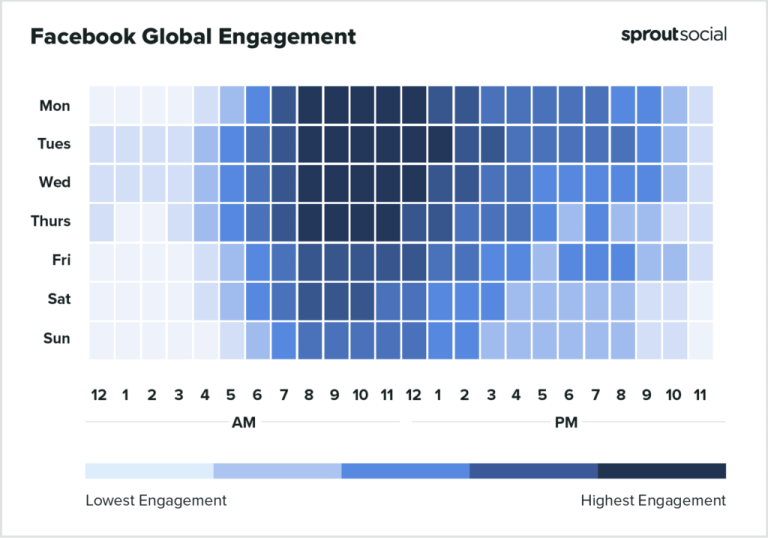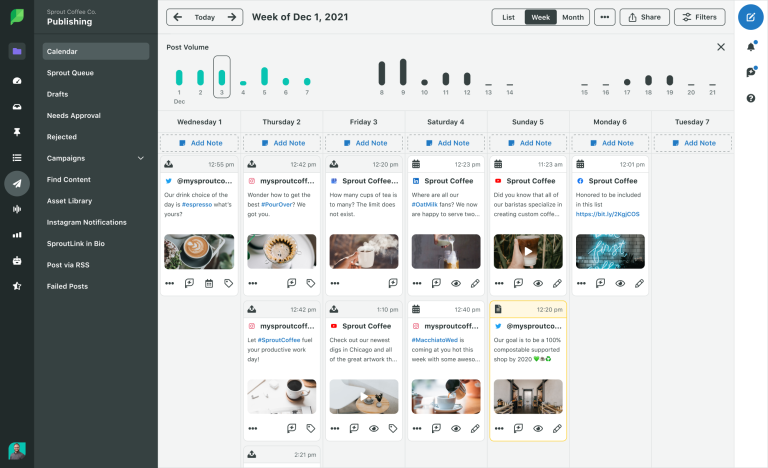Facebook marketing is the act of promoting a business and its products/services on Facebook via a business page. By fully optimizing your business page, brands can create a second website of sorts, even making sales directly on Facebook.
While newer platforms like Instagram and TikTok improve overall viral potential, Facebook is still a good home base for many businesses—plus its ad platform is one of the most sophisticated of its kind.

7 Steps for Creating a Successful WeChat Marketing Strategy
Step 1: Set goals for your Facebook marketing
The first step to any marketing strategy is setting the right goals. These goals and objectives will be an essential reference to measure against to make sure your Facebook strategy is successful.
- Increasing the overall quality of your sales: Improving the quality of sales starts with better targeting. You reach your target audience more efficiently through a well-planned Facebook marketing strategy. Test various targeting options to see which generates the best results.
- Adding more value to the organization: Facebook can help you nurture customers, improve awareness and provide more resources to your audience. Make Facebook your go-to source of information, essentially creating a second website by adding all pertinent details about your business, building your social media store and more.
- Better pulse on the industry: Are your competitors always one step ahead? With the help of social media listening tools, you can track, listen to and report on all social conversations revolving around you, your competitors or the industry.
- More efficient recruiting: Social recruiting is only growing in popularity as social media sites like Facebook can be a great source for increasing recruiting efforts and reaching top talent faster. Facebook also allows you to create job listings that make it even easier to find top talent.
- Smarter growth: Reducing churn, limiting spend and increasing acquisition are all parts of a successful business, and Facebook can help you in each of these areas. Whether it’s through ad spend, increased targeting or more social selling, addressing your Facebook marketing strategy can help you get closer to these goals.
- Tracking progress: Of course, making sure you’re on pace to accomplish these goals is essential, and with a tool like Sprout, you can easily keep tabs on all your Facebook reporting such as displayed in the picture below.
Step 2: Know your Facebook audience
Understanding who is on Facebook and what your target audience breakdown looks like will be important in determining which Facebook marketing strategies you should employ and how. Sprout Social’s deep dive into social media demographics is a great starting point for getting a general sense of who is using the platform and how.
Once you’ve studied up on that, you can spend some time getting familiar with your own Facebook demographics using Facebook Page Insights.
Knowing your Facebook audience will help you understand the right types of content to publish that will generate the most engagement and resonate best with your followers. The goal is to increase engagement and eventually sales, and publishing the right mix of content (which we’ll touch on next) can help you do that.
Step 3: Publish a mix of content to your Facebook feed
The variety of post types you can create on Facebook. To make sure you create an engaging feed with exciting content, you want to publish a good mix of content. This way your feed isn’t boring and predictable—it’s fun and interesting to follow.
- Allow your followers to message you directly through WhatsApp or Facebook Messenger
- Tag products in your photos for followers to immediately make a purchase
- Support local charity organizations by adding fundraisers
- Create humorous content by attaching GIFs to engage your audience
There are many different ways to create a solid mix of content for your Facebook followers—make sure you’re fleshing out a full social media calendar so you can balance out the types of content you create.
Be sure to include content types that help with your bottom line. This includes content like video, images, stories and livestreams.

Step 4: Post when your followers are most active
Even though 87% of consumers are on Facebook, it’s still one of the most difficult social networks to use. Organic content and algorithms make it a challenging for businesses trying to find optimal posting times. However, our guide on the best times to post on Facebook outlines the do’s and don’ts of posting on Facebook:
It’s said that only a fraction of Facebook followers will see your content, but paying attention to when your specific audience is online can help. Keep an eye on your Sprout analytics and your Facebook insights to gain a clear understanding of when your audience is most likely to interact with your content.

Step 5: Schedule your Facebook content
Content creation and curation are important components of any social media strategy. But if you’re posting everything in real-time, you’ll be a slave to your Facebook marketing strategy and won’t have much time for anything else. This is why scheduling your content out in batches is key.
For scheduling Facebook content, you have both free and paid options available to you. Facebook’s Page controls allow you to schedule your posts right from your own page. Sprout’s ViralPost feature will pick the best times for you based on your highest expected audience engagement.
Scheduling and planning your calendar makes it easier for you to see where gaps are in your posts. Using a tool like this will save you time in the long run.

Step 6: Engage proactively with your audience
Like most social media channels, they’re built as networks to converse, discuss and share content. As a brand, you can’t forget that basic idea of what makes a social media network—that means conversation and engagement should never be put on the back burner.
Instead, try to build a community for your audience. Facebook is a great place to hold industry chats or discussions, whether it’s with a different audience or your own customers. While Twitter often gets all the limelight of being a social customer care mecca, don’t forget about Facebook too.
You can help drive Facebook engagement by asking people to simply engage in the first place. However, you can’t sit back and wait for your followers to interact. You can’t reach everyone, but there are ways to increase engagement.
Step 7: Use Messenger to build relationships with customers
Facebook Messenger can help you build relationships, make sales and even improve customer service. Adding a button for someone to message you directly is one of the many options of media you can add to a Facebook post. You can also make the CTA button at the top of your business page a CTA to message your brand.
Then, you can easily have someone on your social team man the Messenger inbox, or you can set up social media automation features to manage it. If you choose to set up a bot, you can easily add premade questions and answers, allow users to shop via Messenger and more.
